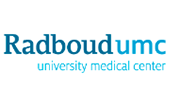Your roadmap to digital health maturity
Our maturity models give you the strategy, experts and planning you need to transform.
Progress is a process. Our eight-stage maturity models support every part of your digital health transformation—whether we’re talking analytics, EMRs, infrastructure or digital imaging. With expert guidance and strategy, you’ll deliver the care you’ve always dreamed of.
What can digital transformation do for you?
Here’s how it’s helped a few organizations:

82% reduction in screening time for sepsis.


$1.5 million in annual revenue savings from predictive analytics.


82% reduction in screening time for sepsis.

Your one stop transformation shop for healthcare
Here’s what our digital maturity models cover:
Electronic Medical Records
Our Electronic Medical Record Adoption Model (EMRAM) helps you assess how you’re adopting and using EMRs—to support patients and clinicians.
The insights you’ll get will help you deliver personalized care at scale, reduce medication errors, speed up your clinical operations, and ensure data security.
Analytics
Our Adoption Model for Analytics Maturity (AMAM) helps you measure your analytics capabilities—and how you’re using them.
Every insight we uncover will guide you in creating a solid data infrastructure (and strategy!), managing your data assets, and improving every part of your center’s performance.
Infrastructure
Our Infrastructure Adoption Model (INFRAM) helps you improve your tech infrastructure, so you can smash your goals while meeting international benchmarks and standards.
You’ll get an in-depth assessment of your health infrastructure and a strategic technology plan for your specific goals. That includes clinical operations, patient outcomes, data security—you name it.
Community Care
Our Community Care Outcomes Maturity Model (C-COMM) assesses digital maturity across community care. That’s vital, because most treatments are non-acute.
You’ll learn what’s behind your data interchange issues, optimize your patient portals and outreach, and get your clinical decision support fully digital.
Digital Imaging
Our Digital Imaging Adoption Model (DIAM) helps you evaluate and fine-tune all your digital imaging processes.
You’ll learn how to fully digitize your imaging IT, engage patients with access to imaging, and standardize your approach to image security.
Continuity of Care
Our Continuity of Care Maturity Model (CCMM) helps you assess how you’re coordinating patient care across multiple sites, providers, and care settings.
You’ll learn how to exchange health information with ease, manage complex care pathways with analytics, and get patients’ data fully unified.
Here’s your roadmap to world-class digital health
This is how our maturity models will support you:

Measuring where you’re starting from
We’ll start with a baseline assessment to understand where you're at, including your current strengths and areas for improvement. You’ll know which of the 8 stages you’re starting at, and exactly which outcomes to tackle next.

Spotting digital wins and delivering vendor-agnostic advice
We’ll help you uncover and fix those sneaky gaps in your workflows and digital health infrastructure. You’ll get expert insights to guide your digital transformation and improve your care delivery.

Supporting your tech expertise and knowledge
We’ll work with you and your leadership to strategize and plan each stage of your digital health transformation. You’ll have a clear roadmap, a vision, and buy-in from every key stakeholder. (That’s exactly what you need.)

Tracking your wins and planning for the future
We’ll guide you to Stage 6 and 7, and then validate your digital health transformation—onsite or virtually. You’ll join an elite group of high-performing health systems, and know exactly how to keep evolving.





